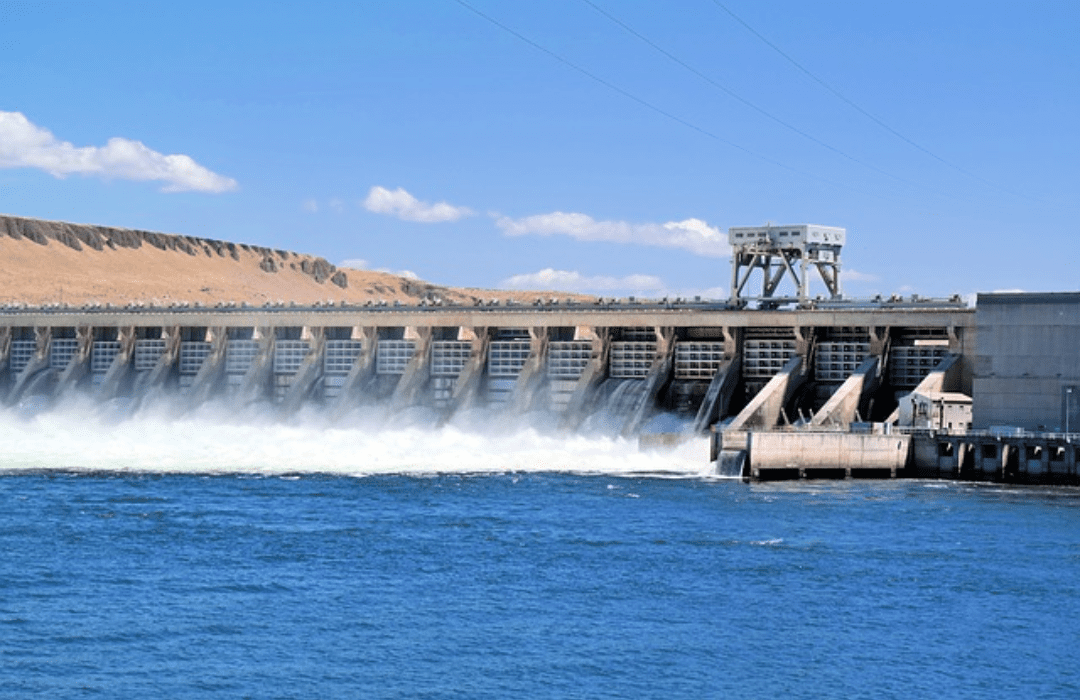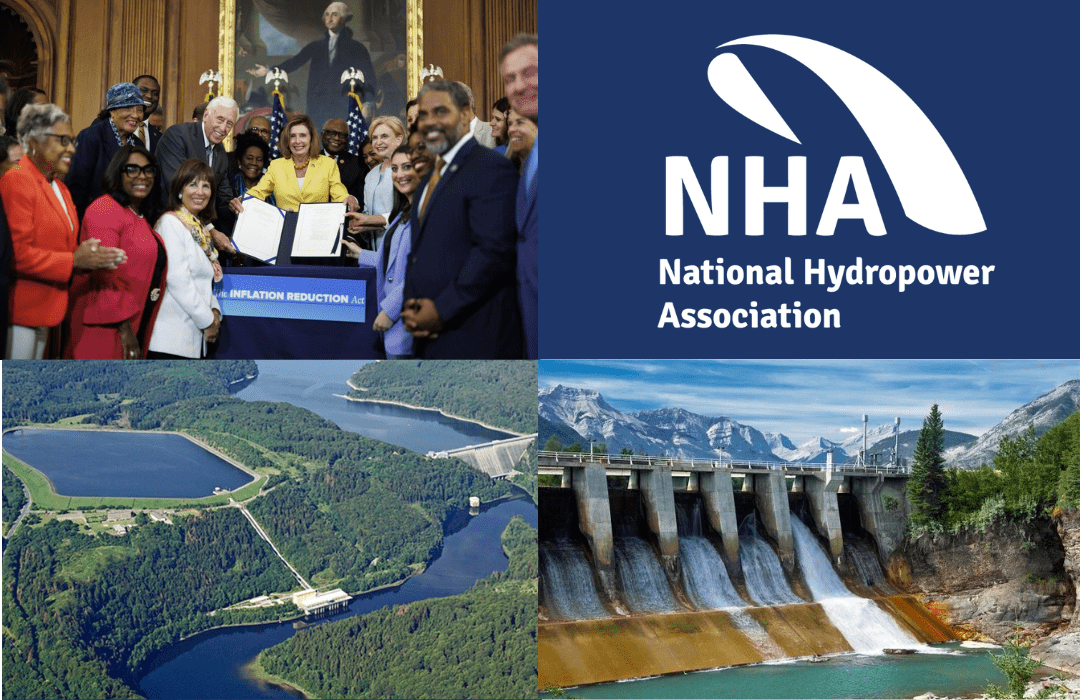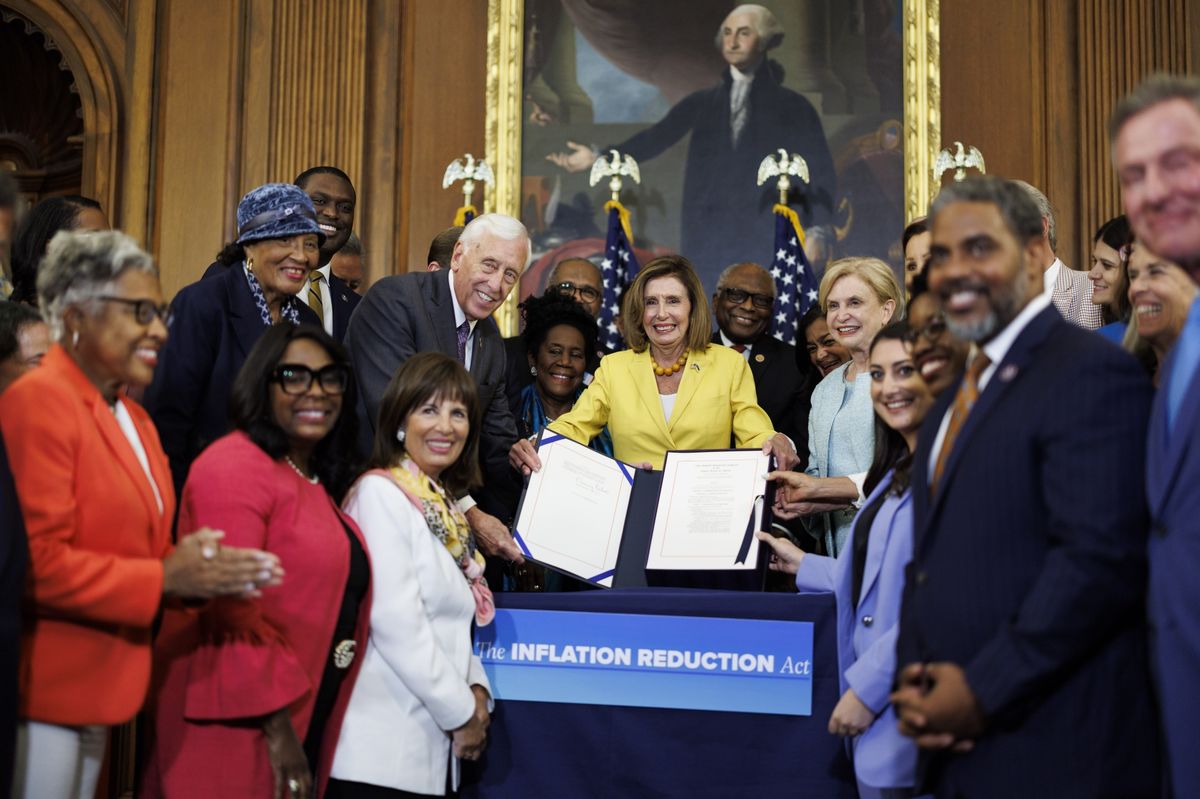On Friday, the U.S. House passed H.R. 5376, the Inflation Reduction Act (IRA), the nation’s most significant climate legislation to date. The landmark measure, which is expected to transform the U.S. electricity landscape, recognizes that waterpower plays a critical role in accelerating the transition to a more reliable, clean energy grid. President Biden is expected to sign the bill as early as this week.
The Inflation Reduction Act includes several of the National Hydropower Association’s (NHA) longstanding tax priorities as parts of the $369 billion package of tax credits for the nation’s energy sector, including:
- Providing investment certainty for capacity upgrades at existing hydropower facilities, retrofits of non-powered dams with hydropower generation, and new marine energy and hydrokinetic generation by creating a 10-year investment tax credit (ITC) / production tax credit (PTC) framework for these projects.
- Incentivizing the development of new pumped storage facilities through the creation of a 10-year technology-neutral energy storage investment tax credit.
- Maximizing the benefits of the aforementioned tax provisions through direct pay for non-taxed entities, like co-ops and public power, and transferability for taxed entities, like investor-owned utilities.
ANALYZING THE KEY WATERPOWER PROVISIONS IN THE INFLATION REDUCTION ACT
PROVISIONS FOR NEW WATERPOWER GENERATION:
(2022 – 2024) Extension of Existing Technology-Specific Clean Energy Tax Credits with Parity for Hydropower and Marine Energy Projects:
The Inflation Reduction Act extends the existing technology specific Section 45 PTC through the end of 2024.
Under the tax credit that expired last year, capacity upgrades at existing hydropower facilities, retrofits of non-powered dams with hydropower generation, and new marine energy projects with a capacity of greater than 150 kilowatts (kWs) were eligible for a production tax credit that is half the PTC rate available for wind.
For all projects placed in service after December 31, 2022, the IRA ends the half-credit for waterpower projects and places the value of the credit for waterpower projects on par with the PTC for wind. The IRA also adds generation using pressurized conduits as an eligible technology under the PTC and reduces the 150 kW threshold for these, hydrokinetic, and marine energy projects to a 25 kW threshold. As was the case underexpired credit, projects that are eligible for the Section 45 PTC may elect instead to claim the Section 48C investment tax credit. This framework remains in place until the end of 2024 when the bill transitions to a tech-neutral framework.
(2025 – 2032) Technology-Neutral Clean Energy Generation Tax Credit
Starting in 2025, the existing renewable energy tax credits transition to technology-neutral clean energy credits. Projects that meet the following criteria may elect to take either a PTC or an ITC, but not both. For an electricity generation resource to qualify for a tax credit, the project must be:
- Used for the generation of electricity;
- Placed in service after Dec 31, 2024; and
- One for which the anticipated greenhouse gas emissions rate is not greater than zero (as determined by the Secretary of the Treasury).
This technology-neutral energy generation tax credit also applies to capacity upgrades and new units at existing non-greenhouse gas emitting electricity generation facilities placed in service after December 31, 2024. As hydropower, marine energy, and hydrokinetic projects are all non-greenhouse gas emitting forms of electricity generation, they should all be eligible for this new PTC or ITC.
It is important to note that rapid decarbonization of the U.S. electricity generation sector may have an impact on the technology-neutral clean energy generation tax credits. If U.S. carbon emissions from the electricity sector are reduced by 75% compared to 2022 levels before 2032, then the technology neutral clean energy generation credits begin a 3-year phase out.
Energy Storage Tax Credit
The Inflation Reduction Act also creates a new technology-neutral 10-year energy storage ITC through the end of 2032. The energy storage ITC applies to new energy storage projects or capacity upgrades at existing energy storage projects with a capacity greater than 5 kilowatt hours (kWh). This tax credit lays the foundation for a much hoped for renaissance in pumped storage, the nation’s only long-duration energy storage technology.
PAYMENT STRUCTURE FOR PRODUCTION AND INVESTMENT TAX CREDITS
PTC Payment Structure
The base rate for the production tax credits in the IRA is an inflation adjusted 0.3 cents per kWh of generation. Projects that comply with prevailing wage and apprenticeship requirements multiply the tax credit by 5. Since the inflation-adjustment rate is calculated from 1990, the credit becomes 2.6 cents per kWh (in 2022) once the inflation-adjustment is factored in.
ITC Payment Structure
The base rate for the investment tax credits in the IRA is 6%. Projects that comply with prevailing wage and apprenticeship requirements multiply the tax credit by 5, which makes the total value 30%.

PREVAILING WAGE AND APPRENTICESHIP REQUIREMENTS
As part of the Democrats’ commitment to supporting living-wage jobs for American workers, and to create opportunities for new workers in the clean energy sector, the IRA includes a new prevailing wage and apprenticeship framework. For projects to multiply their tax credit by 5, then they must comply with the following requirements:
Prevailing wage: Workers building and maintaining facilities must be paid the prevailing rates for the area in which the project is located. The prevailing wage for a given locality will be determined by the Secretary of Labor.
Apprenticeship requirements: Starting in 2022, a set percentage of the labor hours constructing facilities must be completed by qualified apprentices. The percentage of labors hours completed by apprentices must be at least the following:
- 2022: 10%
- 2023: 12.5%
- 2024 onward: 15%
The Secretary of Treasury will promulgate rules for determining whether apprentices have completed the prerequisite percentage of labor hours and outlining the ratio journeymen to apprentices. Recognizing that there may not be apprentices available for a project, the IRA includes a good-faith exception for projects that request qualified apprentices from a registered apprenticeship program but do not receive a response in five business days, or for when no apprentices are available.
BONUS CREDITS
Domestic Content Bonus Credit
Projects that use 100% American steel and iron, and meet the applicable manufactured goods requirements, will be eligible to multiply their credit by 10% if they are claiming the PTC or 10 percentage points if they are claiming the ITC.
Iron and Steel: The IRA specifies that iron and steel must be compliant with the Federal Transit Administration’s Buy America regulations. Those regulations require that all iron and steel used in a project must be manufactured in the United States.
Manufactured goods: The manufactured goods provision calls for a set percentage of manufactured components that go into a project to be mined, produced, or manufactured in the U.S. From 2022 to 2024, 40% of manufactured goods must be from the U.S. The percentage increases to 45% in 2025, 50% in 2026, and then tops out at 55% from 2027 onwards.
The domestic content bonus is different for projects taking the Investment Tax Credit and the Production Tax Credit. A taxpayer that retrofits a non-powered dam that meets the prevailing wage and apprenticeship requirements, and that satisfies the domestic content provision, and that elects to take the ITC will be eligible for a 40% ITC (a 10 percentage point bonus on a 30% ITC). A taxpayer that retrofits a non-powered dam that meets the prevailing wage and apprenticeship requirements, that satisfies the domestic content provision, and that elects to take the PTC, will receive an inflation adjusted 2.86 cents per-kWh PTC (a 10% bonus on 2.6 cents per-kWh credit).
Energy Community Bonus Credit
Projects located in “energy communities” are eligible for a bonus tax credit as well.
Energy communities are defined as any of the following:
1) a brownfield site;
2) an area which has (or, at any time after December 31, 1999, had) significant employment related to oil, gas, or coal activities;
3) a census a census tract or any adjoining tract in which a coal mine closed after December 31, 1999; or
4) a census a census tract or any adjoining tract in which a coal-fired electric power plant was retired after December 31, 2009.
The threshold for “significant employment” in carbon-based forms of energy activities is not defined in the IRA and will be determined by the Secretary of Treasury.
The energy community bonus is different for projects taking the Investment Tax Credit and the Production Tax Credit. For projects electing to take the ITC, the bonus is 10 percentage points. For example, an ITC project that complies with prevailing wage and apprenticeship provisions, and is located in an energy community, would receive a 40% ITC. An ITC project that does not comply with prevailing wage and apprenticeship provisions, but is located in an energy community, would receive a 16% ITC.
For projects taking the PTC, the bonus is 10% of the value of the PTC. For example, a PTC project that complies with prevailing wage and apprenticeship provisions, and is located in an energy community, would receive an inflation adjusted 2.86 cents per-kWh PTC (a 10% bonus on 2.6 cents per-kWh credit).

DIRECT PAY AND TRANSFERABILITY
Direct Pay: The Inflation Reduction Act contains “direct pay” language, which allows organizations exempt from federal income tax (state or local government, the Tennessee Valley Authority, or any Alaska Native Corporation) to take advantage of the tax credit as a direct payment from the Internal Revenue Service (IRS).
Direct Pay and Domestic Content: Starting in 2024, projects taking direct pay must comply with the prevailing wage and apprenticeship requirements or their tax credit will be reduced. For projects that begin construction in 2024, the tax credit will be reduced by 10%; in 2025, the tax credit will be reduced by 15%. For projects beginning construction after 2025, the tax credit will be reduced to zero for direct pay projects that do not comply with domestic content and prevailing wage requirements.
There is an exception from the domestic content requirements for direct pay projects if complying with the domestic content provisions would increase the total cost of the project by 25%, or if there are not goods of sufficient quality or quantity for the project.
Transferability: Taxpayers claiming the ITC may choose to transfer their tax credits to other entities. Any amount paid for the transfer of a tax credit is not counted as taxable income. Partnerships or S corporations that hold assets qualifying for the ITC may transfer their tax credits, with the income from the tax credit being distributed to the partners/shareholders according to their distributed share of the partnership or S corporation.
Note for manufacturers: The IRA revives the Section 48C qualified advanced energy property credit, and it allows the Secretary to allocate an additional $10 billion in tax credits to qualifying projects, starting in 2023. In addition, it amends the language to specifically list “water” as a covered resource under the program. The credit will help U.S. hydropower equipment manufacturers by supporting investments to establish, expand, or re-equip their own production facilities.
WHAT COMES NEXT?
The tax credits created by the Inflation Reduction Act could lead to transformational investments in the waterpower industries. NHA plans on working closely with our members to ensure the Inflation Reduction Act is implemented in a manner that maximizes the benefits to the industry.
With President Biden expected to sign the Inflation Reduction Act into law this week, the National Hydropower Association will continue to cover the IRA and provide additional analysis of its provisions. An article on the IRA’s incentives for manufacturers will be included in POWERHOUSE on August 29, 2022.
*Editor’s Note:
A previous version of this article incorrectly stated the domestic content bonus for projects taking the ITC was 10%, not 10 percentage points. We apologize for any confusion this may have caused.













